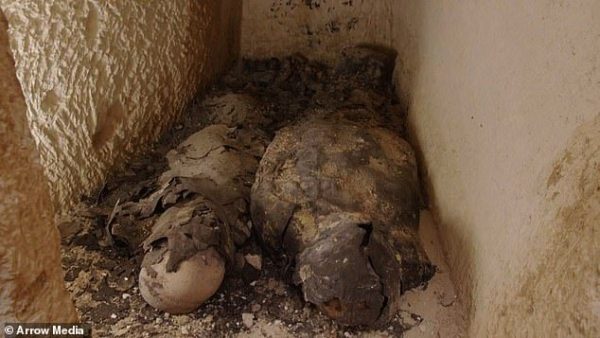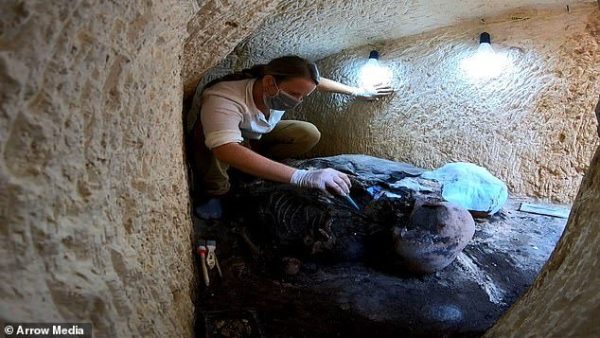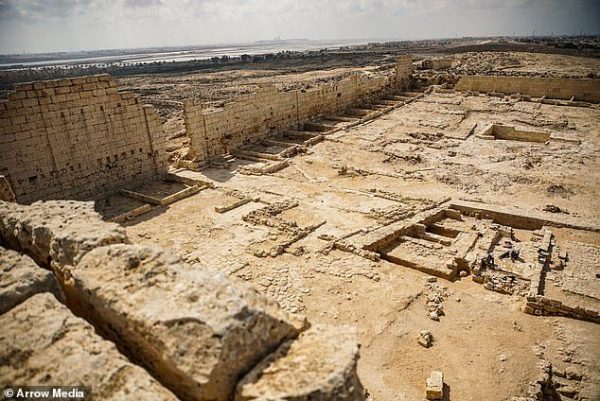The mummies of two high-status ancient Egyptians, found in a Nile delta temple, may hold crucial clues to the location of Cleopatra’s tomb. Despite being in a poor state of preservation due to water seepage, the mummies were originally adorned with gold leaf, a luxury reserved for the elite.

The male and female mummies could have been priests associated with Cleopatra and Mark Antony, playing a key role in maintaining their power.
The discovery at the ancient city of Taposiris Magna, marked by a standing temple, is significant. The two mummies found inside, covered in gold leaf, offer insights into the social status of individuals associated with Cleopatra.
Additionally, 200 coins bearing Cleopatra’s name and likeness were found, linking the pharaoh directly to Taposiris Magna.

Despite the ongoing excavations at Taposiris Magna since 2005, only a small portion of the vast site has been explored. Archaeologists, led by Dr. Kathleen Martinez, are convinced that Cleopatra’s tomb will be found there.
The temple’s association with the ancient myth of Isis and Osiris strengthens the belief that Cleopatra may have desired to imitate this myth in her burial.
Cleopatra, Egypt’s last pharaoh, ruled from 51 BC to 30 BC. Known for her captivating personality and strategic alliances, she associated herself and Mark Antony with the myth of Isis and Osiris to solidify their status as rulers.

The ongoing excavations at Taposiris Magna may soon reveal the long-lost tomb of Cleopatra and Mark Antony, shedding light on one of history’s most intriguing mysteries.





